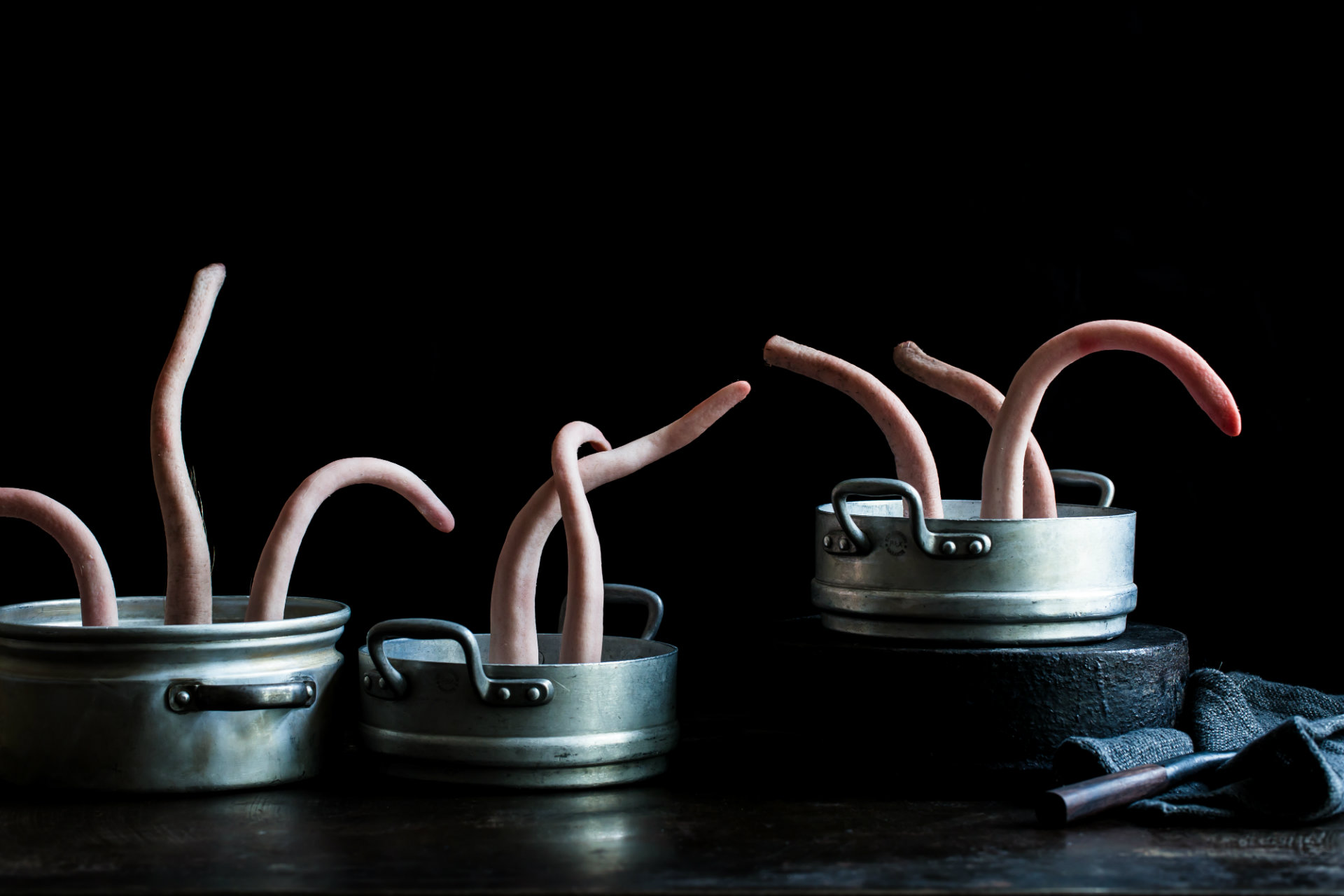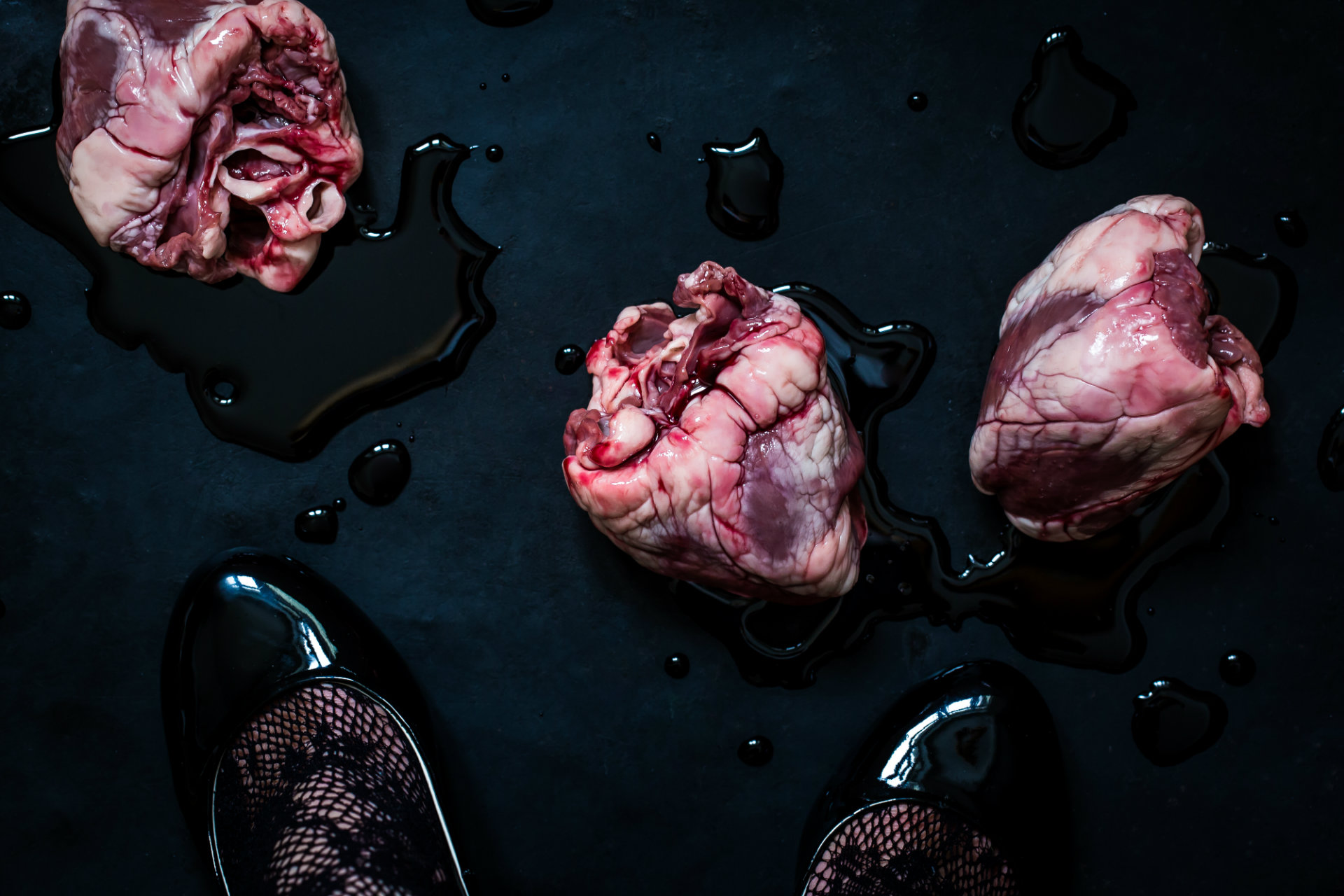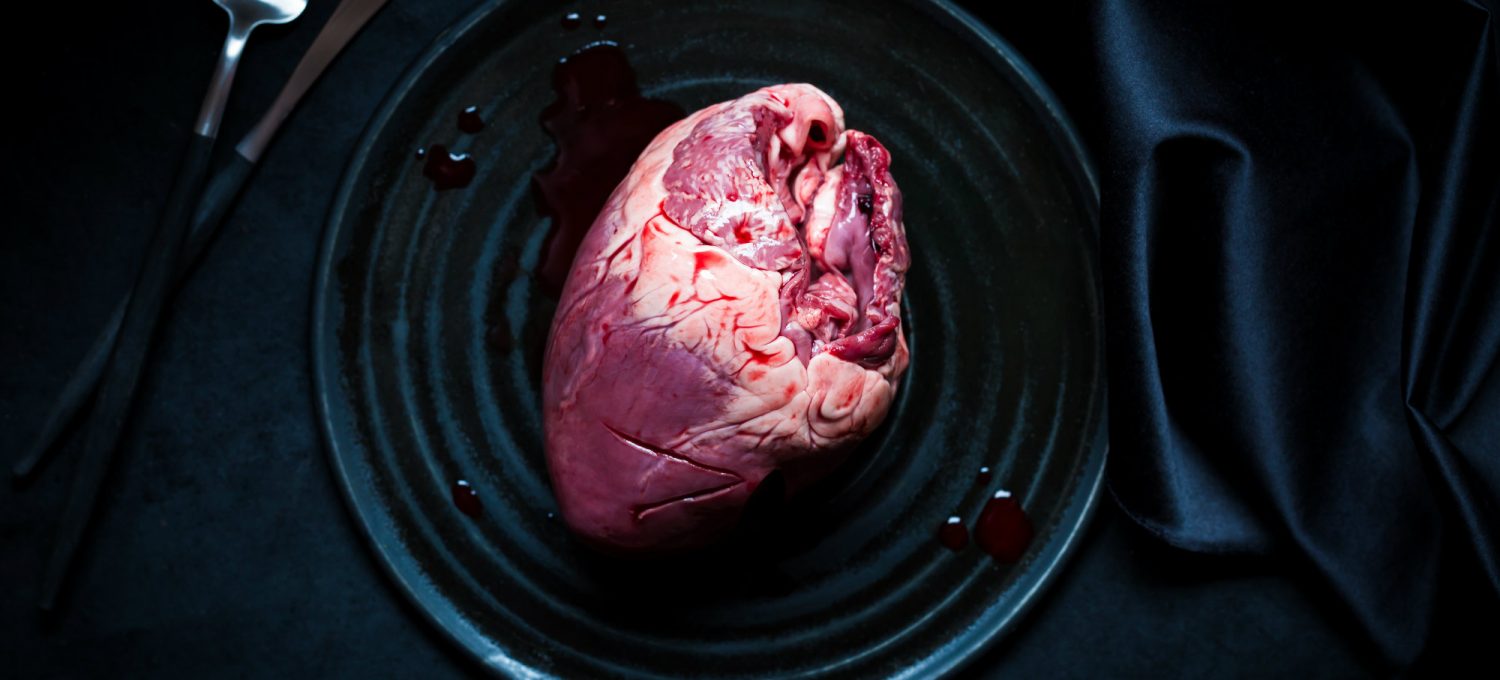Last year, photographer Vivi D’Angelo wrote an affecting account of witnessing slaughter. She was at Herrmannsdorfer – an organic, sustainable farm south of Munich – and chronicled the slaughter of a pig. The photographs – as striking as they are – sit uncomfortably, as they should.
In 2015, around 53 kg of pork meat was consumed per person in Germany (source). Most people have no idea where their meat comes from, and have no interest in preoccupying themselves with the actual death of the animals they eat.
Step by step, things are being done to change the food industry. Be it with an increasing number of nose to tail restaurants, or public (yet respectful) slaughters at farms – such as Herrmannsdorfer, there’s a small, but powerful movement changing our attitude and encouraging us to respect the origins of the food we eat.

Together with chef Vincent Fricke, the guy behind pop-up restaurant Fleischkonsum and the supper club Sonntagsbraten, Vivi is opening a new exhibition tomorrow, Herzprojekt. Then, there will be four Herzprojekt dinners – all hosted on Mondays, beginning October 30. Fricke will serve up a seven-course nose-to-tail menu for 49 €. It will be hosted at MMA – Mixed Munich Arts, and the exhibition has been curated by gallerist Anne Uhrlandt.
I spoke to Vivi to ask her more about this exciting project:
Vivi, it’s not the first time you’ve photographed and focused on the slaughter of livestock – why does this topic interest you so much?
I started to be interested in meat and its production while working for the organic farm of Herrmannsdorfer. There, I came to see more and more of how our food (or in this case, meat) is produced and over time, all bits and pieces create one big picture. I became aware of the life behind our meat, and of the amazing and hard work food producers have to do. I mean, watch a butcher cutting meat pieces and you’ll soon realize, damn, thats tough, tough work! I could not do that for even ten minutes!
And also, I got to see the life cycle of the pigs there, and how much time and energy and resources it takes to grow them. Knowing all this, it became clearer and clearer to me that every bit of food waste is actually life wasted. The offal is one part of food waste people don’t even normally get to see anymore, because the butcher’s “clean” and “tidy up” the animal. I think it’s important to value them and show them again. It’s one fifth of the weight of an animal that’s being thrown away, because people just don’t value these pieces anymore.
How did the collaboration with Vincent Fricke and Anne Uhrlandt come about?
Both are good friends of mine whose projects I really like. Anne with her gallery for contemporary art, which she is so passionate about, Vincent with his catering and nose to tail pop-up dinners – I think they do great stuff. I showed Anne my work because I wanted some feedback and advice, and her reaction was both suprising and stunning to me. “We have to show this!” she said immediately. With Vincent, we have been working together for a while on various nose to tail projects – focused on the origins of food and food waste – and when I showed him the pictures, I think he got inspired and wanted to make something out of it.
He saw a menu in the series, so the idea came into life to combine an exhibition with pop-up dinners. It’s great to have such good “partners in crime”. Planning and organizing an event really is a lot of work and I really enjoyed how we helped and inspired each other mutually over time.
Where were the photos for the exhibition taken?
At my studio. They’re all still lifes. I tried to place these “unloved” parts of animals in noble, elegant settings, as if they were the subject of these sumptuous still lifes we all know from art history. I used both offal I could find at the supermarket (mainly in the lowest and hidden “dog food” section of the butcher shelves) and some pieces I ordered from Herrmannsdorfer.
Actually, to get some pairs of eyes I had to explain very cautiously what my plans were, the butchers were kind of shocked by my request…

What do you hope people take away from the dinner/exhibition?
Actually – even if I know Anne won’t like this statement – my main interest is not people seeing my pictures. Of course, that’s a nice side effect and I’m very proud of this too, but my main thought is that I want people to try Vincent’s dishes, get them to see that innards can be very tasty and can be included in a meat eater’s diet. I mean, if we all ate more innards, then less animals would have to die, right?
So my wish would be for people to come and discover, try to overcome the thought of “oh my, this is gross” and at least give it a chance and try it out.
How has the response to Herzprojekt been so far?
It has been very, very good feedback-wise. We received a lot of support from lovely sponsors and some super nice comments and emails from many people, not only friends, saying this is a great project, that we should keep going and cheering us on.
Nonetheless, we could definitely use more subscriptions to the dinners. Support is great, participation and actually getting involved is even better. I have the feeling people believe they will receive a whole brain on their plate and be forced to eat it. That’s not at all what will happen! Vincent’s dishes are very delicate, they have a good balance of strong and gentle flavours and play a lot with textures. It will be lots of fun to taste these dishes while sitting in between the pictures that inspired them. I really hope many more people will join us in this eating experience!
Sign-up to one of Herzprojekt’s dinners at MMA by sending her an email (vivi @ vividangelo.com) with your ideal date, and find out more about it here.
Exhibition opening: MMA, 1pm-5pm on October 28.
Herzprojekt Dinner #1: MMA, 6pm, October 30.
Herzprojekt Dinner #2: MMA, 6pm, November 6.
Herzprojekt Dinner #3: MMA, 6pm, November 13.
Herzprojekt Dinner #4: MMA, 6pm, November 20.


1 comment on “Herzprojekt”